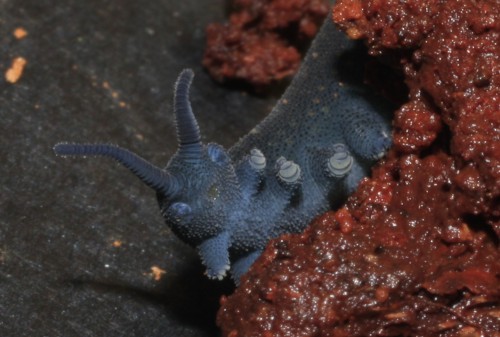I think this is rather awesome: a detailed examination of the Cambrian fossil Hallucigenia, specifically an examination of the fine structure of its claws, has revealed clear affinities of the long extinct form to this adorable little guy, the velvet worm.



“I was hiding in this slime mold because I love you!”
Umm…isn’t that the little guy who shoots snot?
I suspect Martin Smith’s blog post is laying it on a wee bit too thick. Reading it, you’d imagine that up until now, everyone thought Hallucigenia was of completely unknown affinity, and that
Alas, today’s coverage in the popular science press swallows this whole.
In fact, the onychophoran identity of Hallucigenia has been suspected for over 20 years. I recall when a paper by Ramsköold and Hou came out and received a lot of coverage. One of Stephen Jay Gould’s examples of Cambrian organisms that had no relatives in later fauna had collapsed. In fact, Steohen Jay Gould discussed the revelation in his 1990 essay The Reversal of Hallucigenia which he published in Eight Little Piggies.
No doubt Martin Smith would argue that the interesting new evidence is the first real evidence. He gets to have his opinion, but the identity of Hallucigenia as an onychophoran is fairly well-established, and has been for two decades.
Oops, that should be Ramsköld.
Aw, that sure is cute-looking. Although my favourite oddities are still the tardigrades. Such cuddly creatures! And so tough, too.
Yeah, that’s what I thought when I read this. For a minute I thought I might have been thinking of the wrong critter. Nice to know I was remembering correctly.
My cats have claws like that. Just sayin’….
Can we finally stop calling it the Cambrian explosion now? Maybe the Cambrian smolder?
How about the Cambrian Acceleration?